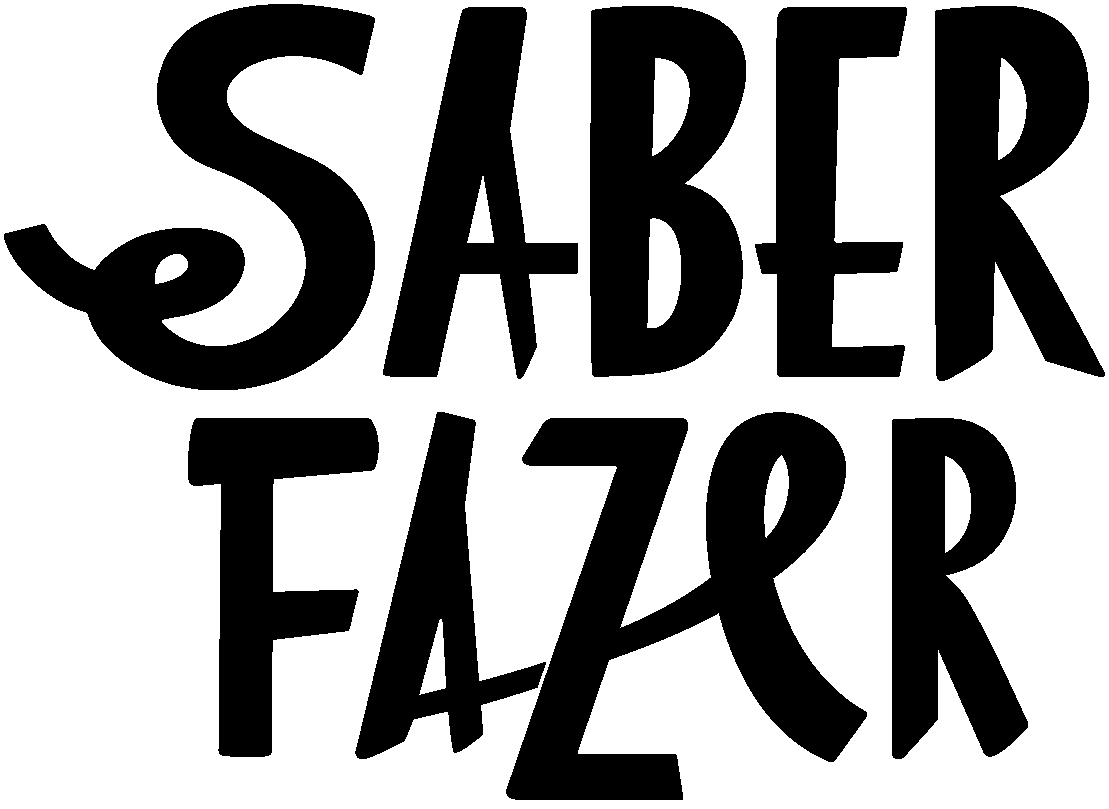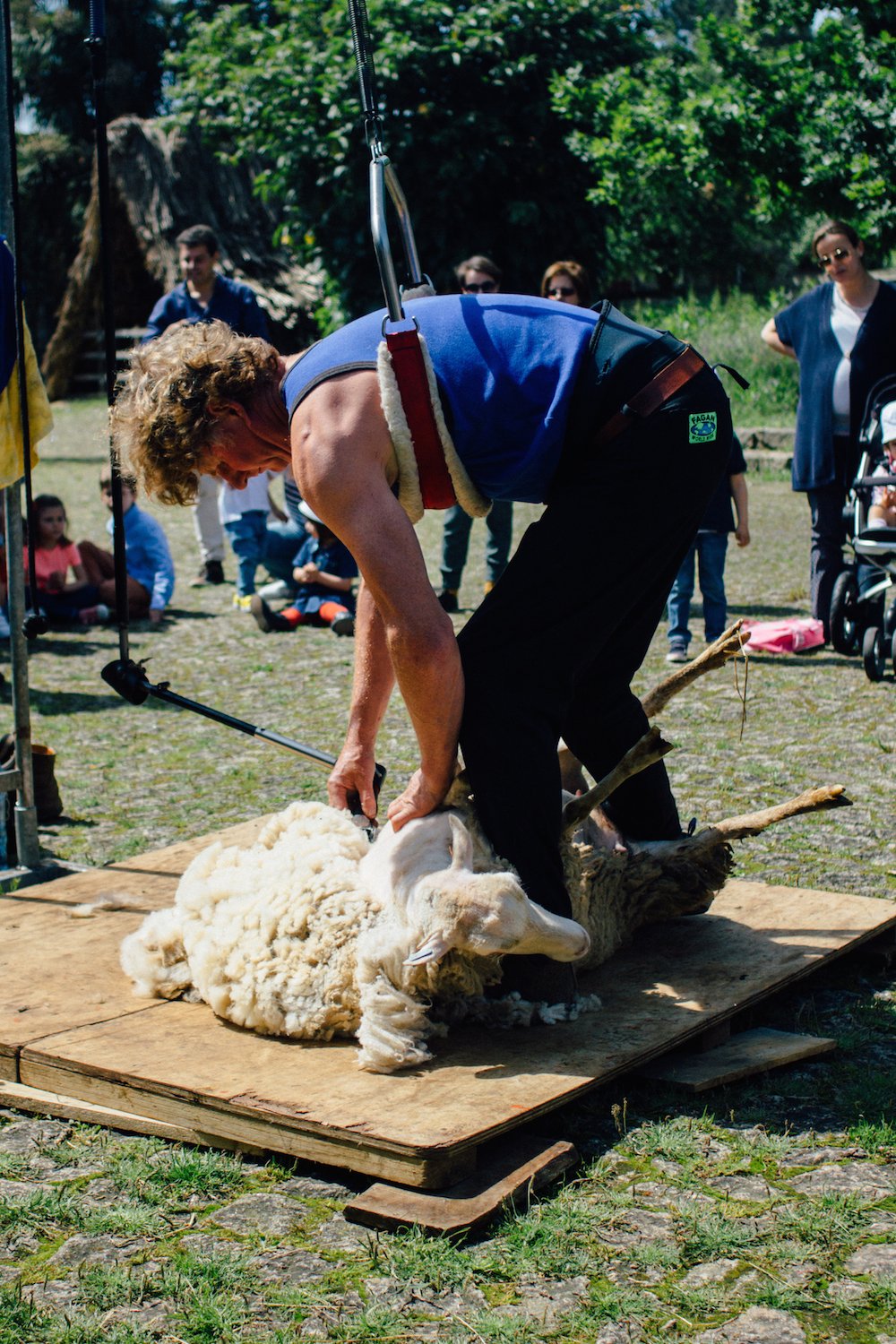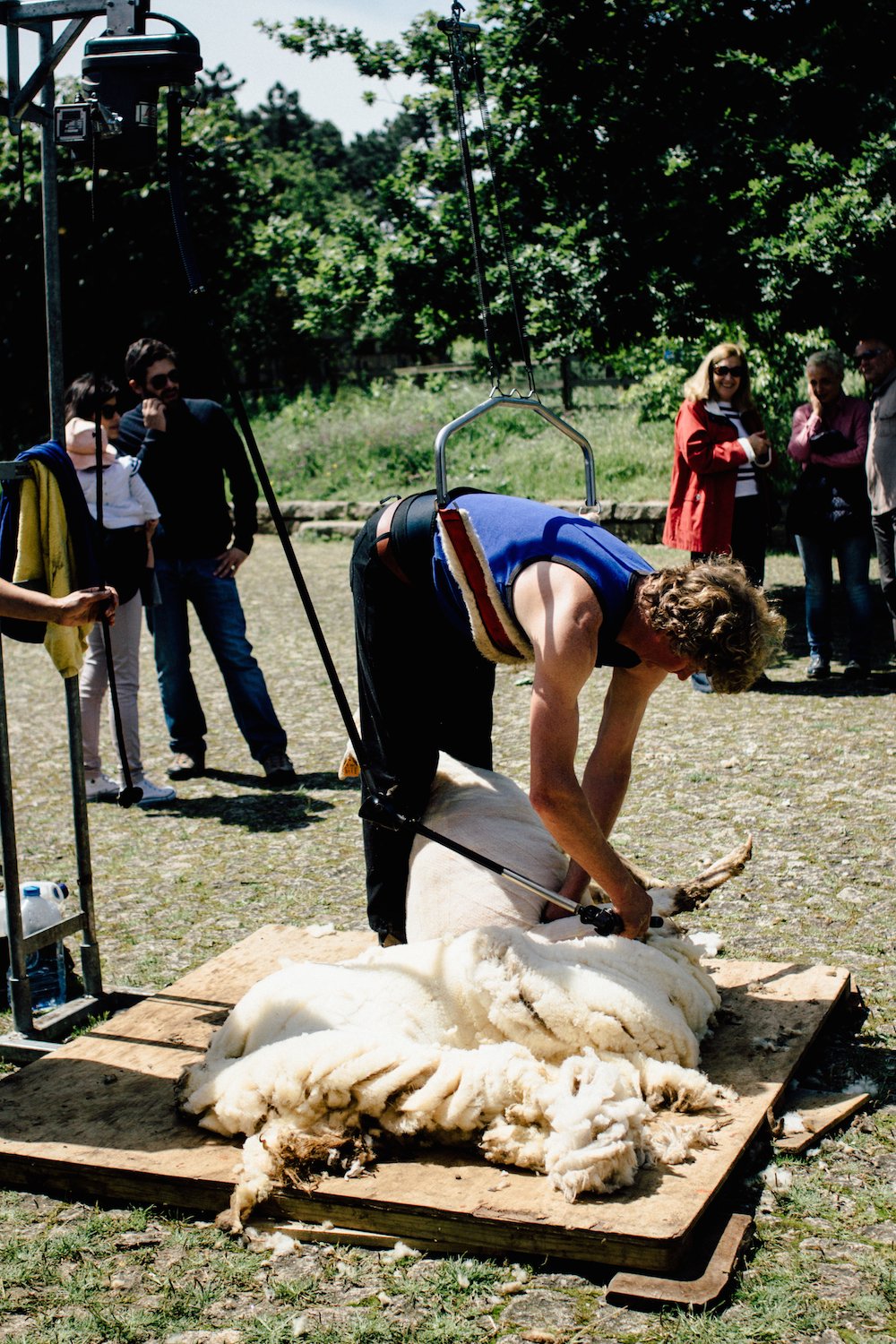A Técnica Bowen de tosquia
Das primeiras vezes que falei com a Suzana sobre o tipo de tosquia que o Marty fazia, ela disse-me logo que a técnica usada por ele era a técnica Bowen e remeteu-me para este vídeo para me introduzir ao assunto.
Até agora não tive necessidade de explorar a tosquia tecnicamente, nem tinha bem reflectido sobre a importância do assunto para a obtenção de fibra com qualidade, mas quanto mais leio e aprendo, mais me cativa.
Originalmente, esta técnica foi criada por Godfrey e Ivan Bowen nos anos 40, e desde então tem sido aperfeiçoada pela prática e também pela evolução do equipamento utilizado (principalmente nas máquinas utilizadas), mas os princípios básicos originais mantiveram-se.
O que é importante reter talvez seja que Godfrey e Ivan foram dos primeiros a pensar na sistematização da tosquia, não só com o objectivo de a optimizar a nível de tempo e esforço, mas de garantir que a lã obtida fosse da máxima qualidade (sem cortes duplos e velos removidos inteiros) e que os animais fossem bem tratados durante o processo.
O processo passou a ser disciplinado, com uma coordenação precisa que minimiza o stress tanto para o tosquiador, como para a ovelha.
Esta técnica é específica para a tosquia com máquina, e a sua especificidade reside tanto na forma como se manobra o animal, como na sequência e ordem dos golpes longos ( “long blows”) dados com a máquina.
Para que o animal se sinta relaxado, é necessário que o tosquiador também se sinta confortável e numa posição equilibrada, e é por isso que o posicionamento adoptado bem como o equipamento utilizado são importantes.
A ovelha nunca está presa ou atada. É antes manobrada de forma segura pelo tosquiador - na tosquia mecânica, o tosquiador tem obrigatoriamente de manobrar o animal, e não mover-se em redor deste, pois a sua posição relativamente ao braço da máquina mantém-se constante.
Assim, a ovelha é colocada sentada entre as pernas do tosquiador e é manipulada com os joelhos, os pés e com a mão que está livre.
Sendo a ovelha tão manobrada com os pés, o calçado usado é bastante importante. É normal usarem-se uns mocassins específicos para a tarefa - os mocassins de tosquiador - que são suaves e moles, para serem confortáveis e ajudarem a sentir o corpo do animal. Também têm como função proteger os pés, e impedir que se escorregue, já que as consecutivas tosquias vão espalhando a gordura natural da lã pela plataforma.
Antes de iniciar a tosquia, o Marty montou o estrado de madeira e certificou-se de que estava bem nivelado. Este é um factor importante porque estando a ovelha simplesmente sentada, e com a gordura que se vai libertando, se usarmos uma superfície inclinada, será praticamente impossível manter o animal numa posição estável.
Durante todo o processo, o tosquiador encontra-se de pé e debruçado sobre o animal. Para aliviar este esforço, principalmente em dias normais de trabalho em que centenas de animais são tosquiados consecutivamente, é também usado um apoio suspenso que suporta o tosquiador de forma a que este possa estar dobrado sem esforço.
A máquina da tosquia está ligada a um braço articulado que também tem como função mantê-la suspensa, permitindo que seja manobrada com o mínimo de esforço.
As lâminas usadas dependem do tipo de ovelha a ser tosquiada - variam de acordo com o tipo de lã e tipo de pele. Por exemplo, as de raça merina têm uma pele mais fina e enrugada, o que torna a tarefa mais difícil e demorada. O próprio esquema da técnica Bowen apresenta variações para as ovelhas de raça merina, para as ovelhas de tipo cruzado e para cordeiros. As ovelhas não são todas iguais.
A técnica Bowen baseia-se numa sequência de movimentos, ou “golpes”, pré-definidos.
Uma das coisas que os irmãos Bowen fizeram, foi “limpar” a tosquia de movimentos e técnicas que eram herança da tosquia à tesoura, mas que numa tosquia à máquina não faziam sentido. Tem principalmente a ver com o tipo de golpes: numa tosquia com tesoura estes são curtos e pausados, numa tosquia à máquina são longos, já que a máquina desliza pelo corpo do animal e assim a técnica foi desenvolvida para optimizar estes “golpes longos” (long blows).
De forma muito resumida, e sabendo que já foram introduzidas alterações e que cada tosquiador praticará a técnica com recurso a mais ou menos golpes, a sequência de movimentos é a seguinte:
Começa-se por limpar a zona da barriga, virilhas e cauda. Esta lã é colocada de lado, por ser obviamente de inferior qualidade - as fibras são curtas e nesta zona do corpo estão geralmente muito sujas.
De seguida, passa-se à perna traseira esquerda e fundo das costas, e a seguir é a zona da cabeça. Segue-se o pescoço e o ombro esquerdo. Com esta primeira ordem de movimentos, conseguiu libertar-se o velo no flanco esquerdo, o que permite passar agora para a zona das costas do animal.
Nas costas aplicam-se os “golpes longos”, que fazem um movimento único de baixo para cima, libertando a maior parte do velo de forma rápida e eficaz. Fica para o final o lado direito, começando-se pelo ombro e perna frontal direita, percorrendo a ligação entre a perna frontal e a perna traseira direita, e terminando nesta.
O velo é assim retirado inteiro.
No dia da nossa tosquia em Serralves tive a sorte de ter lá o João que filmou uma das ovelhas a ser tosquiada pelo Martin do início ao fim, e assim consigo mostrar no vídeo a sequência de movimentos da técnica Bowen mais claramente, bem como a forma como o animal é manobrado de forma calma e segura.
--
[09.05.2015 / Este post refere-se à investigação e actividades desenvolvidas no âmbito do programa Saber Fazer em Serralves ]
The Bowen Shearing Technique
The first few times I talked with Suzana about the type of shearing done by Martin, she told me he used a specific technique, called the Bowen Technique, and directed me to this video me to introduce the subject.
Up until now I didn’t have the need to explore the shearing process technically, and I hadn’t really though about the subject, but the more I read and learn, the more interesting it becomes.
So, I learnt that originally this technique was developed by Ivan and Godfrey Bowen in the 1940’s, and has been evolving ever since, due to practice, but also to the technical developments (especially those concerning the shearing machines), but the basic principles developed then have been kept.
What’s important to know is that Godfrey and Ivan were the first to think about systematizing the shearing, not only with the goal of minimizing the time end effort spent, but also of guaranteeing that the wool obtained would be of maximum quality (no second cuts and fleeces removed in one piece), and that the animals were treated well during the process.
The shearing process became disciplined, with a precise coordination that minimized stress for both shearer and sheep.
This technique is specific for machine shearing, both in the way the animal is handled, but also because of the sequence of blows applied with the shearing machine.
For the animal to feel relaxed, the shearer needs to be comfortable and correctly positioned, and that’s why the position adopted as well the equipment used are so important.
The sheep is never restrained or tied up, but is rather free and is handled by the shearer constantly. In machine shearing, the shearer has to move the animal, and not move around the animal, because his position relatively to the machine shaft needs to be fixed.
So, the sheep is placed in a sitting position in between the shearer’s legs and it is moved around with the knees, feet and with the free hand.
Being the footwork so important, so is the footwear. There are special mocassins for this - the shearer’s mocassins - that are soft, in order to be comfortable and allow to feel the animal’s body on the feet. They are also supposed to protect the feet and prevent slipping, because the several shearings will spread wool grease on the platform.
Before starting, Martin took some time to assemble the wooden platform and make sure it was perfectly leveled. This is important, because with the sheep sitting down and with all the grease, if you’re using an inclined surface to work, it will be very difficult to keep the animal in place.
During the whole process, the shearer is standing and bending over the animal. To minimize this stress, especially in workdays when hundreds of animals are shorn consecutively, a suspended support is used so that the shearer can be bent without any effort.
The shearing machine is attached to a shaft, which suspends it in a way that it is also easy and light to work with.
The blade used depends on the type of sheep being shorn - they vary accordingly to the type of wool and skin. For example, merino sheep have very thin and wrinkled skin, making them more difficult to shear. The Bowen pattern itself presents variations for merino, crossbreed and lamb shearing. All animals are different.
The Bowen Shearing Pattern is based in a pre-defined sequence of movements, or blows.
One of the things that Bowen brothers did was to eliminate movements that were inherited from blade shearing, and that didn’t make sense in machine shearing. It has a lot to do with the type of “blows”: in blade shearing these are short, but in machine shearing they are long, because the machine can slide continuously on the animal’s body.
In a very short way, and knowing that changes have been introduced and that every shearer has its own style, the Bowen Shearing Pattern goes as follows:
The first area to be sheared is the belly, genital and tail area, and this wool is set aside because, obviously, they are of inferior quality - the fibers are short and are usually very dirty.
Next, the left back leg and end of the back is done. The head and neck areas follow, and the front left leg next. With this first sequence of movements, the fleece on the left side has been released, which allows the shearer to go to he animal’s back.
On the back, the shearer applies the long blows, in a solo movement from bottom to top, releasing most of the fleece quickly. The end will be on the right side of the sheep, starting on the right shoulder and leg, then going in between the right front leg and the back leg, finishing with this one.
That’s how the fleece is removed in one piece and the sheep is handled in a calm manner.
At our shearing in Serralves I was lucky enough to have João there that made a little video of one of the sheep being shorn by Martin from beginning to end. So, you can check the video to understand the Bowen shearing technique a little better.
--
[09.05.2015 / This post refers to the investigation and activities developed during the Saber Fazer em Serralves program]











